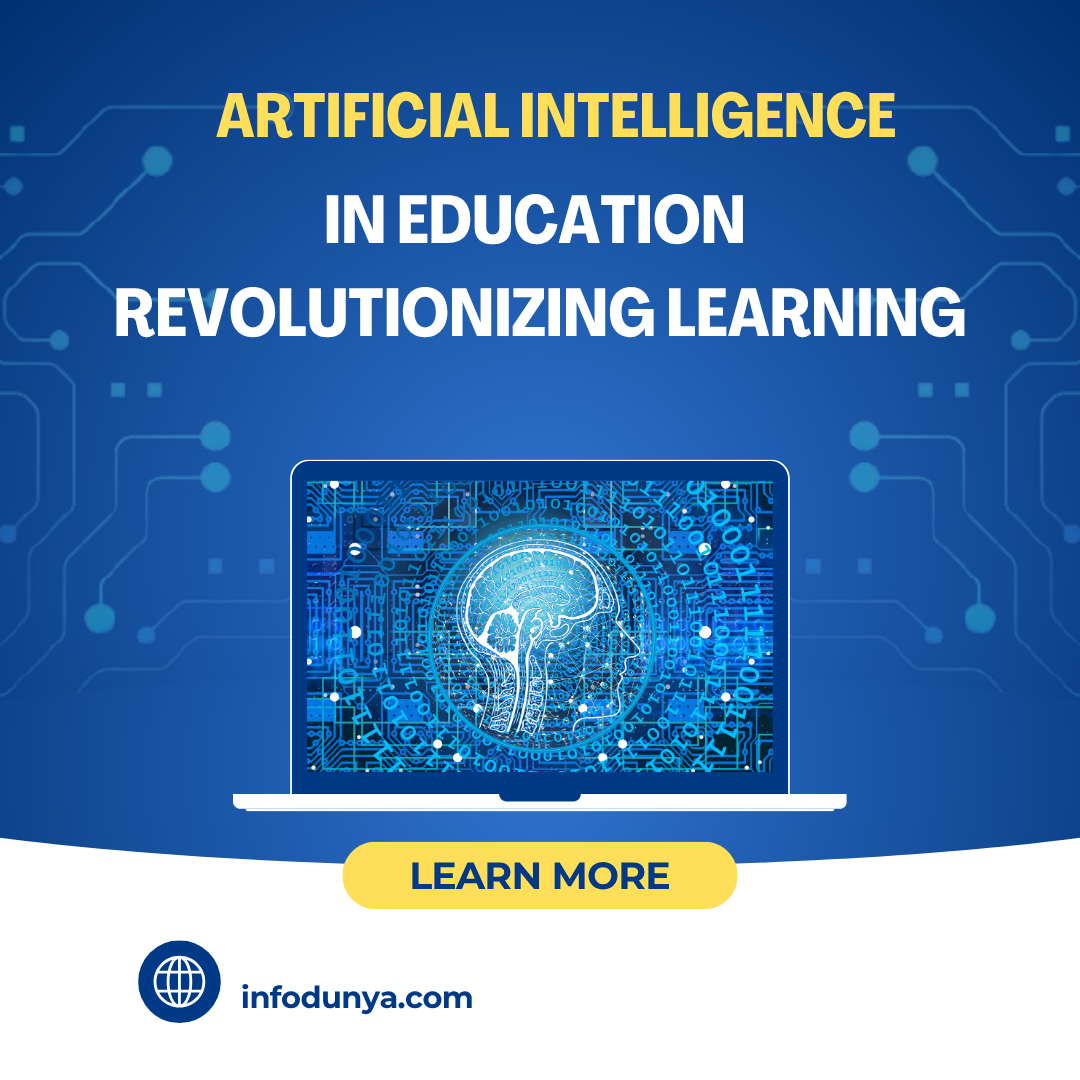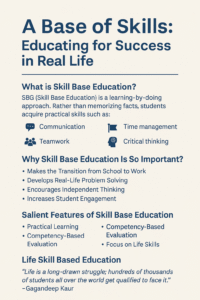Introduction
The world of education is evolving rapidly, and at the heart of that transformation is artificial intelligence (AI). Whether you’re a student, teacher, faculty member, school administrator, or simply curious about the future of learning, understanding how AI in education works is essential. AI is not just a buzzword—it is becoming the foundational force behind the modernization of global education systems.
In this in-depth guide, we will explore how AI is transforming education for all stakeholders. We’ll look at real-life use cases, discuss challenges, present ethical considerations, and provide clear steps for implementing AI practically and responsibly. Our goal is to explain the complex world of AI in education using simple, human-friendly language while delivering real solutions to real problems.
What is AI in Education?
Artificial intelligence in education refers to the use of advanced algorithms, machine learning, and intelligent systems to support and improve teaching and learning processes. AI can:
- Personalize learning experiences
- Automate administrative and repetitive tasks
- Provide intelligent tutoring and feedback
- Analyze performance data
- Enhance accessibility and inclusiveness
Examples of AI education tools include chatbots, adaptive learning platforms, automated grading systems, voice recognition apps, and predictive analytics tools.
AI in Education – Then and Now
AI has existed in education for decades, but its application has skyrocketed in recent years due to increased access to data and improved computing power.
Key Milestones:
- 1960s: PLATO – one of the first intelligent tutoring systems
- 1990s: Emergence of Learning Management Systems (LMS)
- 2010s: Integration of AI in MOOCs and digital classrooms
- 2020s: Rise of AI tutors like ChatGPT, Khanmigo, and AI-powered administrative platforms
Benefits of AI in Education
Personalized Learning
AI enables a tailored educational journey. Platforms like DreamBox and Squirrel AI adapt to students’ strengths and weaknesses in real time.
24/7 Tutoring Support
AI chatbots and virtual tutors offer round-the-clock assistance, eliminating the time and access limitations of traditional learning.
Automated Grading and Instant Feedback
Teachers can automate repetitive tasks, freeing up time for strategic lesson planning and student engagement.
Data-Driven Insights
AI platforms can identify trends in performance, helping schools intervene before students fall behind.
Enhanced Accessibility
AI tools support students with disabilities through voice assistance, speech-to-text, screen readers, and real-time translation.
Teacher Empowerment
AI enables educators to personalize lessons, monitor student engagement, and receive real-time feedback on teaching strategies.
Real-World Examples
Squirrel AI (China)
Utilizes deep learning to dynamically adjust lessons based on student responses and progress patterns.
Google Classroom with Gemini AI
Integrates Google’s productivity tools with AI gemini for better lesson planning, grading support, and content enhancement.
Charlotte-Mecklenburg Schools (USA)
Pioneered an “AI Champions” program to train teachers on responsible AI use and classroom integration.
AI Tools Transforming Classrooms
| Tool | Use Case | Benefit |
|---|---|---|
| ChatGPT | Assignment help, brainstorming | Sparks creativity and enhances critical thinking |
| Grammarly | Grammar and style corrections | Improves academic writing and clarity |
| Otter.ai | Transcription of lectures | Simplifies note-taking and content review |
| Quizizz | Gamified assessments | Boosts student engagement and retention |
| Duolingo | Language learning | Offers personalized learning and gamification |
Challenges and Ethical Considerations
Academic Integrity
AI tools can be misused for plagiarism or cheating. Schools must promote responsible usage and update honor codes.
Privacy and Data Security
AI systems collect large amounts of student data. Strong encryption, transparency, and data protection policies are critical.
Bias in AI Algorithms
Biases in training data can result in unfair outcomes. Tools must be regularly reviewed and updated to ensure fairness.
Over-Reliance on Technology
Students may become too dependent on AI, leading to reduced independent problem-solving and creativity.
Teacher Resistance
Some educators fear replacement by machines. Proper training can help them view AI as a support system, not a threat.

Implementing AI in the Classroom
Identify the Challenge
Pinpoint the problems to be addressed: grading, learning gaps, special needs, etc.
Select the Right Tools
Evaluate AI tools based on your goals, ease of use, scalability, and cost.
Train Teachers
Offer workshops, certifications, and on-the-job support to build AI literacy.
Set Clear Guidelines
Establish ethical and practical rules for AI usage among students and staff.
Monitor and Adjust
Use analytics to evaluate effectiveness and make timely improvements.
How Students Can Use AI Effectively
- Use AI as a guide, not a shortcut
- Ask AI to quiz you, not just provide answers
- Use grammar tools for early drafts, not final versions
- Reflect on AI-generated feedback before applying it
A Day in the Life with AI: Ayesha’s Story
Meet Ayesha, a 10th-grade student attending an online school. Her AI assistant starts her day with a recap of yesterday’s lessons. She receives personalized math problems based on her previous performance. During her English class, she uses voice-to-text software to write an essay. Later, an AI tutor helps her prepare for a science test.
This is not science fiction—it’s the reality of AI in education. Personalized, efficient, and empowering.
The Future of AI in Education
AI-Powered Virtual Teachers
Lifelike digital instructors that can teach interactively across subjects.
Immersive Learning with AR/VR
Combining AI and virtual reality for experiential learning in subjects like science, history, and geography.
Emotion AI
Detects student frustration or confusion in real time and adapts the lesson accordingly.
Global Learning Access
AI can bring top-tier education to remote or underserved areas with limited resources.
Blockchain + AI
A secure way to manage certifications, attendance, and personalized learning paths.
Predictive Career Guidance
AI tools will help students identify careers that align with their skills, interests, and academic performance.
Tips for Parents and Guardians
- Encourage AI as a helpful tool, not a dependency
- Discuss digital responsibility and academic honesty
- Monitor screen time and tool usage
- Stay informed about the platforms used in school
- Engage with children to understand their learning journey
AI for Special Education Needs
AI tools can dramatically improve outcomes for students with special needs:
- Dyslexia: Text-to-speech tools
- ADHD: Focus and task management apps
- Hearing Impairment: Real-time captions and visual cues
- Language Barriers: Instant translation and multilingual support
AI in Higher Education and Research
Universities are embracing AI for:
- Personalized course pathways
- Automated and secure online proctoring
- Predictive dropout prevention
- Literature review, data extraction, and content summarization
- AI-assisted thesis writing and academic support tools
Role of AI in Teacher Training
- Simulated classrooms to practice teaching scenarios
- Automated feedback on instruction style
- On-demand professional development
- Skill-based microlearning tailored to teacher needs
Addressing the Fear: Will AI Replace Teachers?
No. AI is a supplement—not a substitute. While AI handles repetitive and administrative tasks, teachers bring empathy, adaptability, and inspiration. The goal is collaboration: AI empowers teachers to focus on what humans do best—teach with heart and connect with students.
Conclusion: In AI We Trust, For a Smarter Tomorrow
AI in education holds enormous potential—but only when used ethically and effectively. It’s not about replacing teachers or students, but enabling them to perform at their best. From personalized learning to accessible classrooms and smarter teaching strategies, the benefits of AI are already transforming education.
As educators, students, and parents, we must embrace this change mindfully. The future of learning is here, and with the right mindset, tools, and practices, it can be empowering for all.




Pingback: Skill Base Education: Building Real-Life Skills for Students
gqilx6